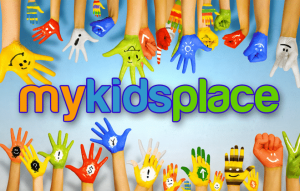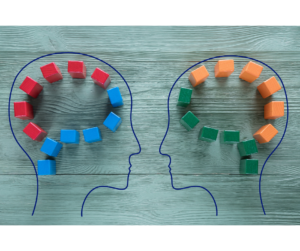Introduction
In my previous blog post, “Social Skills,” we discussed the importance of social skills on child development. We also covered how social awkwardness creates significant challenges for everyday interactions. In this article, we will discuss the link between autism and social skills.
Autism vs. Social Awkwardness
Autism is classically characterized by social skill deficits and delayed or impaired communication. Seeing as how it is considered a spectrum disorder, a number of symptoms accompany an autism diagnosis. For those interested, you can read more about autism in my previous article.
Examples associated with autism such as echolalia, limited to no verbal output and/or eye contact, sensory sensitivities, and emotional regulation can lead to socially unexpected behaviors. Consequently, others might not know what to make of these behaviors. Other symptoms that can impact social interactions include repetitive and rigid behaviors and routines, avoidance of physical contact or large crowds, and the ability to project an intense and unwavering focus on one subject (King University, 2020).
As a result of these differences, a common misconception about autism concerns a lack of interest in socialization and this is simply not true. Many individuals with autism desire friendships and relationships as much as the next person. They just have a different way of expressing themselves and socializing. To learn more about autism and social skills, you can read Dr. Thurlow’s article about “James” here. It is important to reiterate that symptoms will vary as autism is a spectrum disorder and we will only go over the most common symptoms for the sake of brevity.
Echolalia, Scripting & Limited Verbal Output
Echolalia is the repetition of words and/or phrases. It’s sometimes referred to as “scripting”. For individuals with autism, quotes from other people, movies, books, etc. seems to be a satisfying means of expression. For example, they might use these phrases in response to direct questions or as spontaneous utterances. There is an interesting article on this behavior here.
Individuals with autism may otherwise have only limited verbal output and communicate solely through echolalia. Speech therapists will work with individuals to improve functional communication skills. In the meantime, it’s important for others to remain understanding and appreciate that the individual may be trying their best to communicate with you.
Limited Eye Contact
Individuals with autism experience great difficulty with maintaining eye contact as they can find it “distressing,” and actually quite distracting. Subsequently, avoidance enhances their focus on the speaker. In addition, some studies support hypotheses backing neurological contributing factors. Research suggests that some individuals even report a “burning” sensation or some physical discomfort when forced to make eye contact (Stewart, 2020). Understanding and accepting an individual’s reasons for not making eye contact is best as it is not their intention to offend you. As previously mentioned, if they are avoiding eye contact, it may mean they are trying especially hard to listen and process your words.
Sensory Modulation/Processing Differences
Sensory processing disorders arise when the brain cannot appropriately process incoming information. This results from either a hypersensitivity or hyposensitivity to incoming stimuli via the senses. And it can lead to unexpected social behaviors. For people that are hypersensitive, even the smallest stimuli, such as a gentle pat on the shoulder, can be painful. This can result in “tantrums” or “meltdowns” because the sensory environment is simply too much to handle. Managing a “sensory overload” requires patience and understanding. Providing enough space and time to calm down is crucial due to the additional time required to process the initial stimulus that upset them.
On the other hand, sensory hyposensitivities means an individual requires more stimuli than most to feel connected with their surroundings. As a result, you can have a child who is “sensory seeking,” meaning their hugs might feel too hard, or they present with extremely high energy levels as a means of modulating arousal levels. Despite these differences, occupational and speech therapy can offer strategies and solutions that make a huge difference.
How Can Occupational Therapy Help?
Fortunately, individuals diagnosed with autism will often work with occupational therapists. Occupational therapy (OT) promotes active participation in meaningful activities, or occupations which can include social skills. This means that intervention and treatment can focus on education, independence, confidence, problem-solving, and play participation. A key focus of OT is taking a “holistic” approach taking into account all aspects of an individual’s life outside of their medical needs. This includes the physical, social, emotional and cognitive needs and capabilities of the individual.
Social skill specific interventions for children with autism may start by focusing on sensory processing differences and determining which “sensory diet” activities and adaptive equipment will help with overall regulation.
What is a Sensory Diet?
As previously mentioned, sensory processing differences can be quite stress-inducing for children. Behaviors often arise if they’re having trouble regulating their nervous system. This is where a sensory diet could be a great starting place for your child. Implementing a sensory diet may sound complicated, yet we subconsciously implement our own sensory diet on a daily basis. A sensory diet essentially provides the appropriate amount of sensory input for the child to regulate and organize their nervous system. This sets the stage for “higher level” cognitive functioning.
Sensory diets are individually designed activity plans that boost occupational engagement by regulating the nervous system. This is achieved by interweaving enjoyable activities/exercises throughout the child’s day for improved focus and energy levels to optimize occupational performance. To read more specifics about sensory diets, click here.
Adaptive Equipment Can Help
Therapists will often recommend adaptive equipment to compensate for areas of concern. For example, noise-cancelling headphones and weighted blankets provide great options for some sensory-seekers and avoiders. These tools can allow a child the right amount of sensory information so they are more focused and attentive. Additionally, communication devices like speech tablets would make a significant difference in facilitating social participation for an individual with limited verbal output. This can reduce the frustration children feel when they are not able to express their wants and needs.
How Can Speech Therapy Help?
Speech therapists work with children to improve and increase speech production, articulation and language development. As such, areas of focus can include improving and understanding nonverbal communication (body language, gesturing, interpreting facial expressions) as well as communication through augmentative and alternative communication (AAC) systems. Examples of AAC include speech tablets, sign language and storyboards. As mentioned before, learning ways to communicate one’s desires can significantly reduce negative behaviors and tantrums. To see some examples, click here.
Social Stories as a Strategy
Other strategies can include modeling and role playing social interactions so the child develops problem solving skills and experiences the trial and error process. These strategies provide opportunities for growth and learning in a safe environment where the child can receive feedback.
Social stories can also provide children with healthy coping strategies and avoid unexpected behaviors. Therapists write social stories with the child’s specific needs in mind. They typically center around a significant challenge the child is experiencing. This might be something like initiating conversation, taking turns and providing guidance and coping strategies for appropriate social engagement.
In Conclusion
It important for all children to develop social skills as we are all social beings. Increasing awareness and education on how to best communicate with those with autism is especially important. Regardless of any underlying diagnosis, understanding behaviors, exercising patience, and respecting different forms of communication is crucial for the growth and development of all children.
In addition, there are many different interventions and specialists that can help facilitate your child’s communication and social needs. Stay tuned for the next and final blog post about social skill milestones and what you, the parents/caregivers, can do to help your child.
References
Socially Awkward: Symptoms and Facts. (n.d.). Retrieved April 16, 2020, from https://online.king.edu/news/socially-awkward-symptoms/
Stewart, R. (n.d.). Should We Insist on Eye Contact with People who have Autism Spectrum Disorders. Retrieved April 22, 2020, from https://www.iidc.indiana.edu/irca/articles/should-we-insist-on-eye-contact-with-people-who-have-autism-spectrum-disorders.html
Why is occupational therapy important for autistic children? (n.d.). Retrieved April 22, 2020, from https://network.autism.org.uk/good-practice/case-studies/why-occupational-therapy-important-children-autism
Disclaimer: My Kids Place works to provide reliable and relevant information for parents, educators, healthcare professionals, etc. to further support and understanding for children with special needs. The presented information is provided by skilled and state-licensed therapists. All expressed opinions and ideas are for your consideration and should not be considered formal medical advice.



